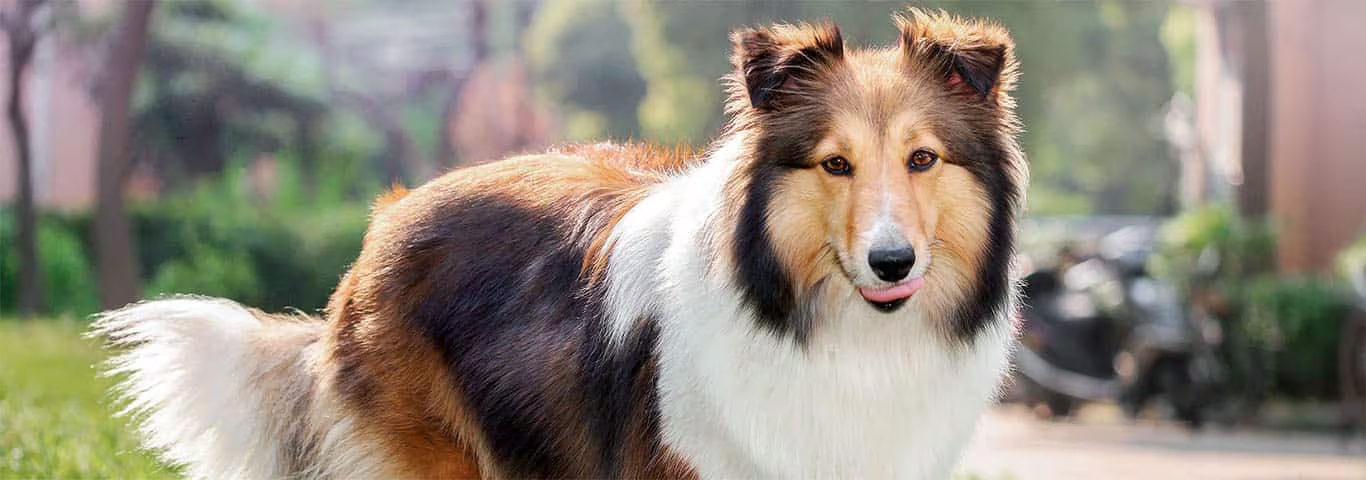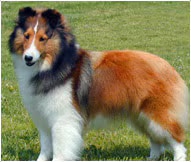They are strong and compact yet agile. The head is wedge-shaped, although not as refined as the modern show collie. The small, high-set ears are erect with the tips falling forward slightly.
The thick, double coat of the Sheltie provides excellent protection from bad weather. The outer coat is long and straight. The dog has a generous mane and frill and feathering on the legs and tail. The undercoat is dense and woolly. Shelties are either black, blue merle or sable, and are marked with white, tan or both.
Shelties range in height from about 12 to 15 inches and weigh from 14 to 20 pounds (six to nine kilograms). They live about 12 to 15 years.
Shetland sheepdogs are known for their gentle, sweet, pleasing personality. They are also playful and affectionate, all traits that have made them a popular family pet. Breed experts often comment that Shelties like to please; coupled with their intelligence, it is no wonder they excel at obedience training.
Shelties are leery of strangers. As a result, they are good watchdogs, likely to greet outsiders with lots of barking. They also bark when excited. While not usually aggressive, some Shelties may nip at people they do not know, whether the strangers are adults or children. Others may be somewhat timid with strangers.
Because they are active, working dogs by nature, Shelties like to be kept busy and want the company of their guardians. They are not dogs content to lie around alone all day. Many Shelties bark excessively.
Shelties can, however, do well in small homes or apartments as long as they are exercised in a fenced-in yard or walked on a leash.
Their ample coat requires a good brushing at least twice weekly; the coat sheds heavily in the fall and spring.
Shetland sheepdogs, known affectionately as Shelties, look at first glance like miniature rough collies. In fact, they are often mistakenly called Miniature collies; however, although they may share the same ancestors, the Shetland sheepdog is a distinct breed developed under unique circumstances.
Shelties hail from the Shetland Islands of Scotland, also known for Shetland ponies and other small breeds of animals. The area's harsh conditions, with sparse vegetation, favored smaller breeds of livestock and thus, smaller dogs to herd them.
Shelties are probably the result of crossing the larger rough collie of the time with other island dogs including small herding breeds and spaniels. Some historians believe that the Sheltie was developed by 1700. The breed was refined after it was imported to mainland Scotland in the 20th century. Shelties were first recognized in England in 1909 and first registered in the United States in 1911.
The Shetland sheepdog was bred to herd sheep and was considered a kind, smart, hardworking animal. The Shelties we know today are somewhat larger than their original ancestors, but they retain a reputation for intelligence, willingness to work, and good humor. The same qualities that made them exemplary helpers and herders combine to make them popular family pets.
Adopt a pet. Change a life.
Are you prepared to adopt a pet? Use these tools to make sure you are ready for the commitment.
Adopt a pet. Change a life.
Are you prepared to adopt a pet? Use these tools to make sure you are ready for the commitment.























